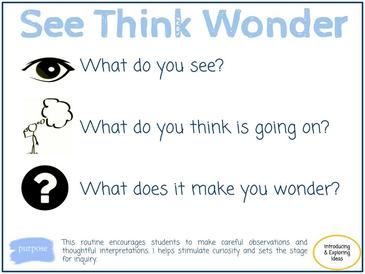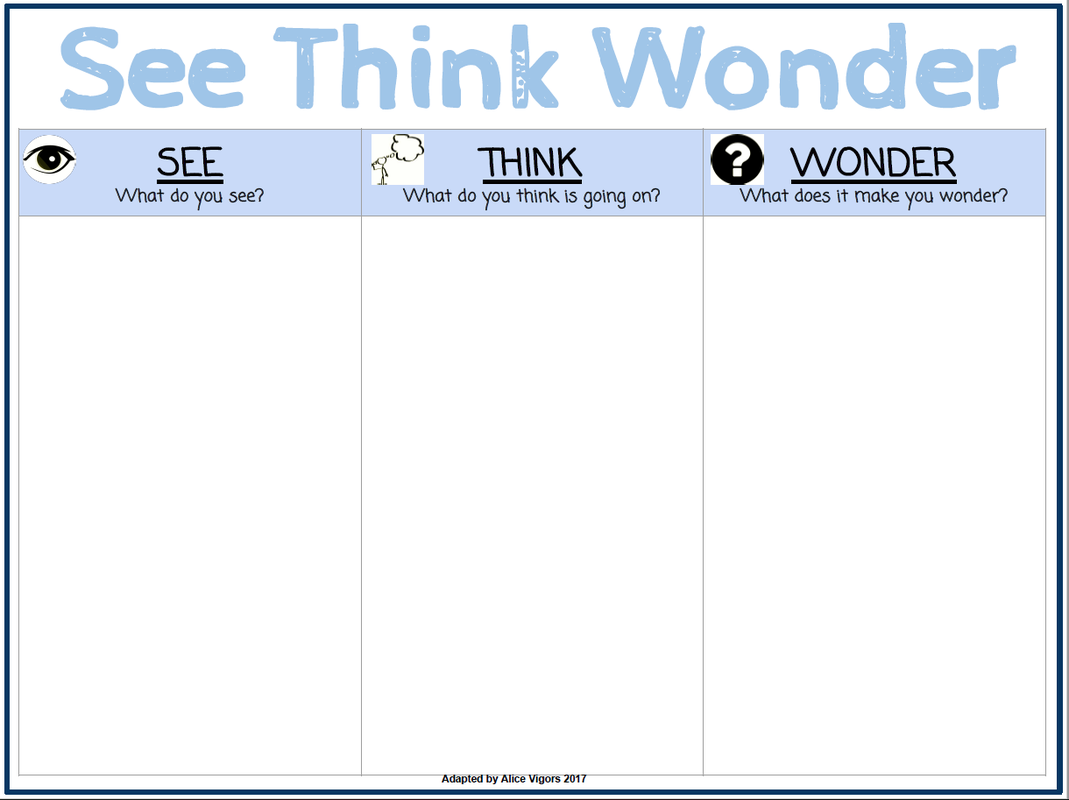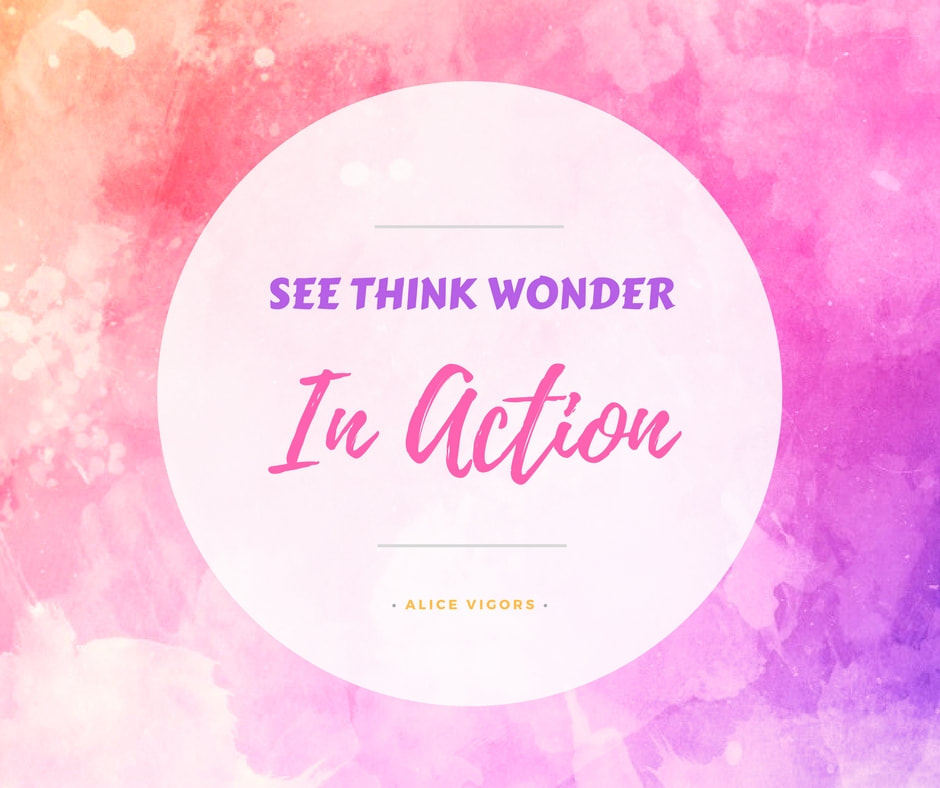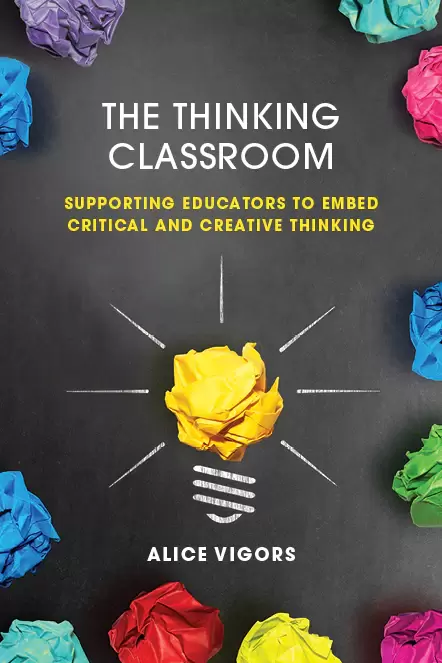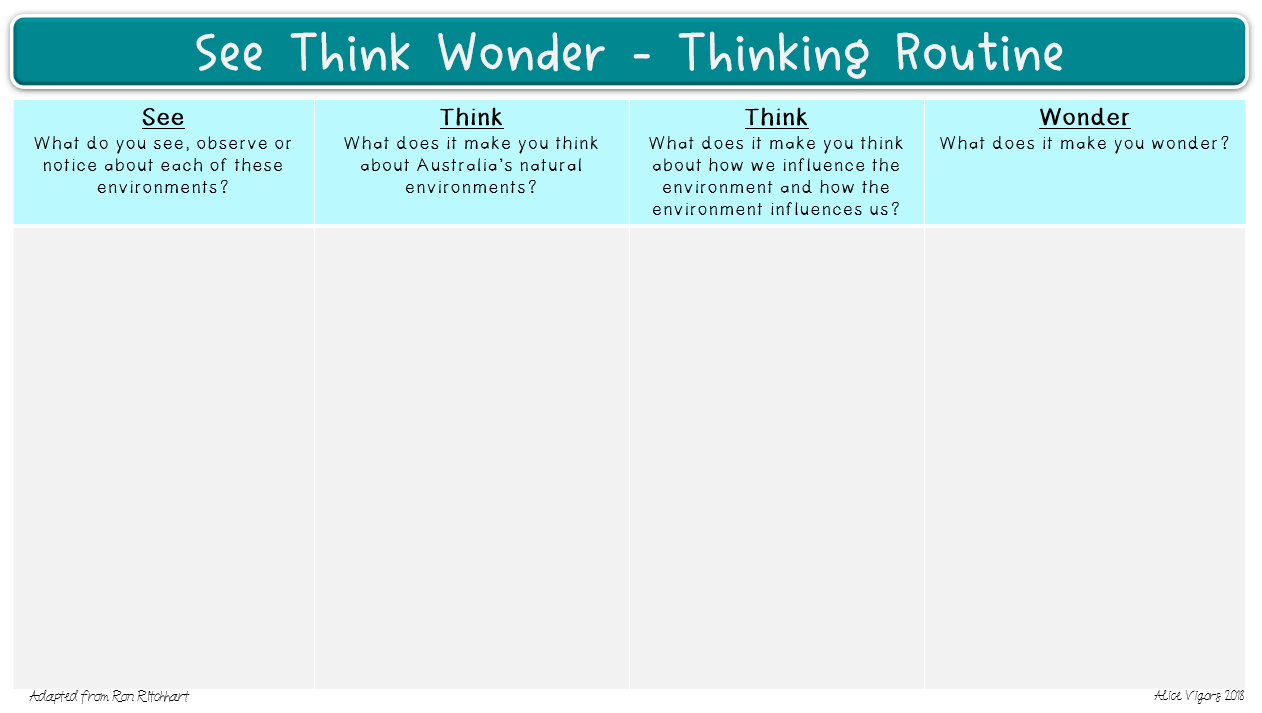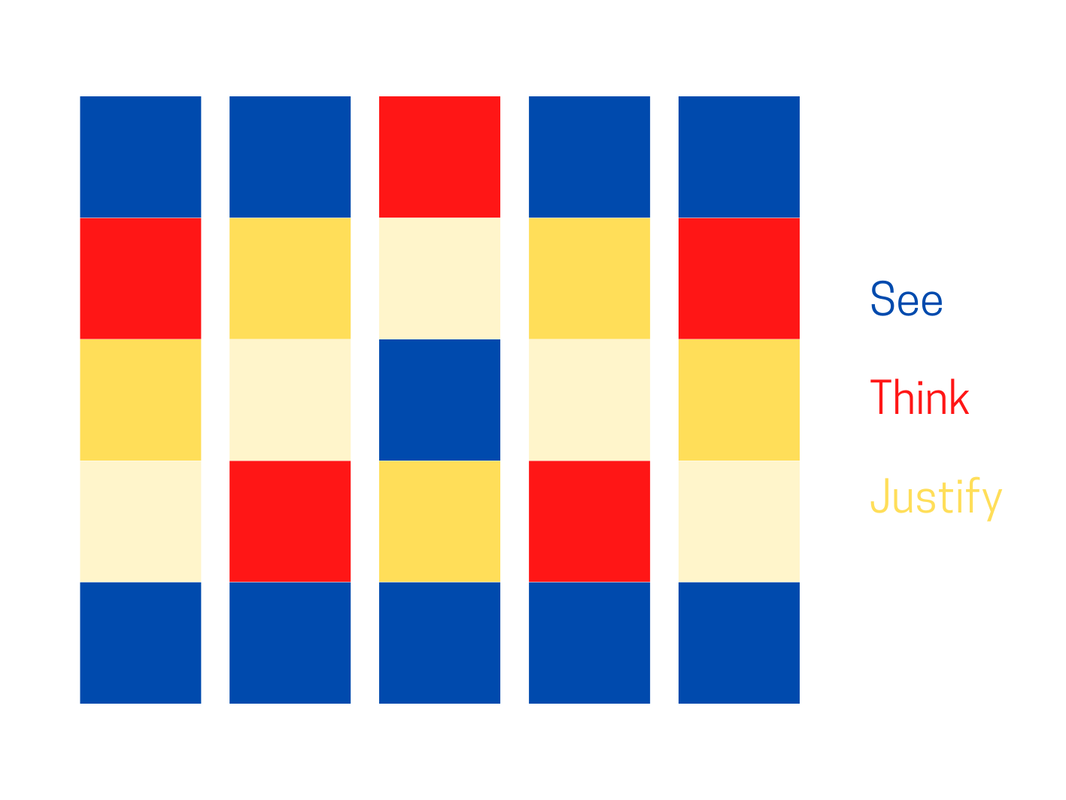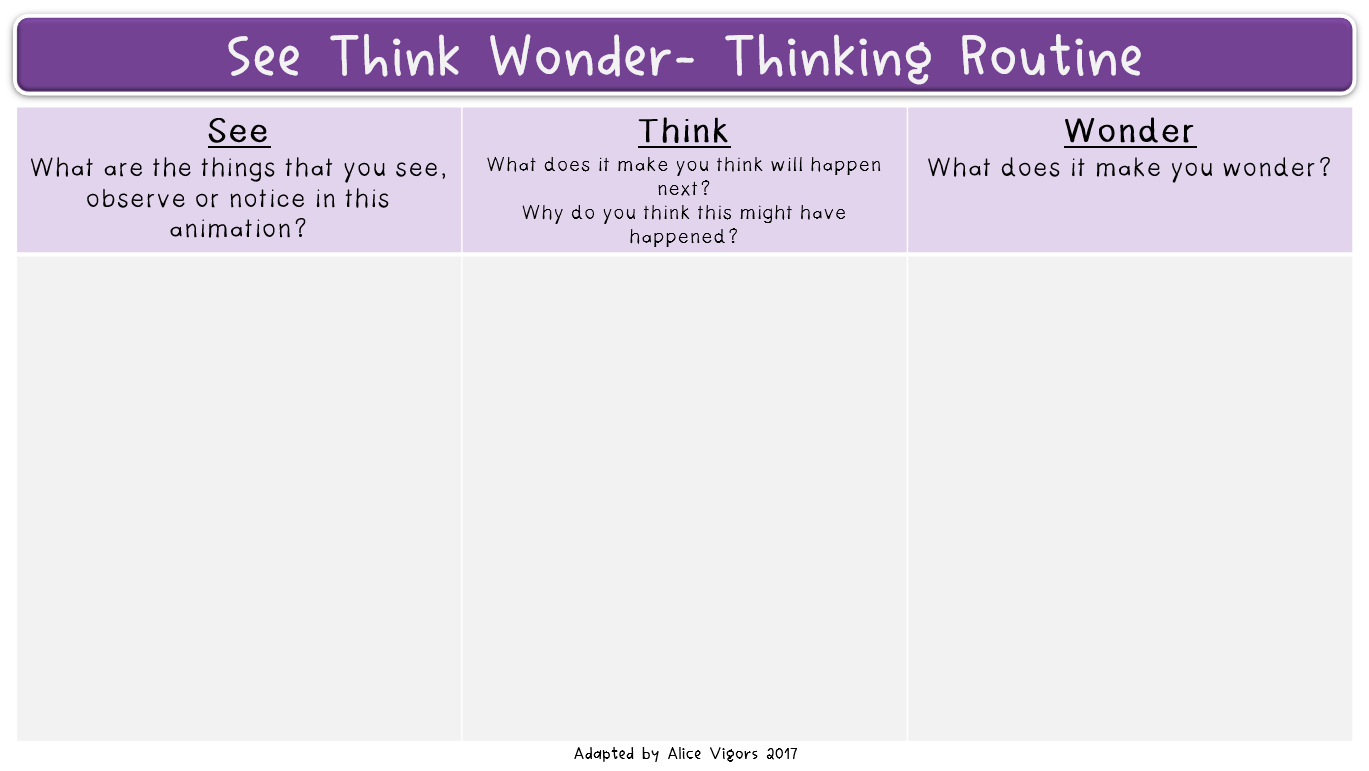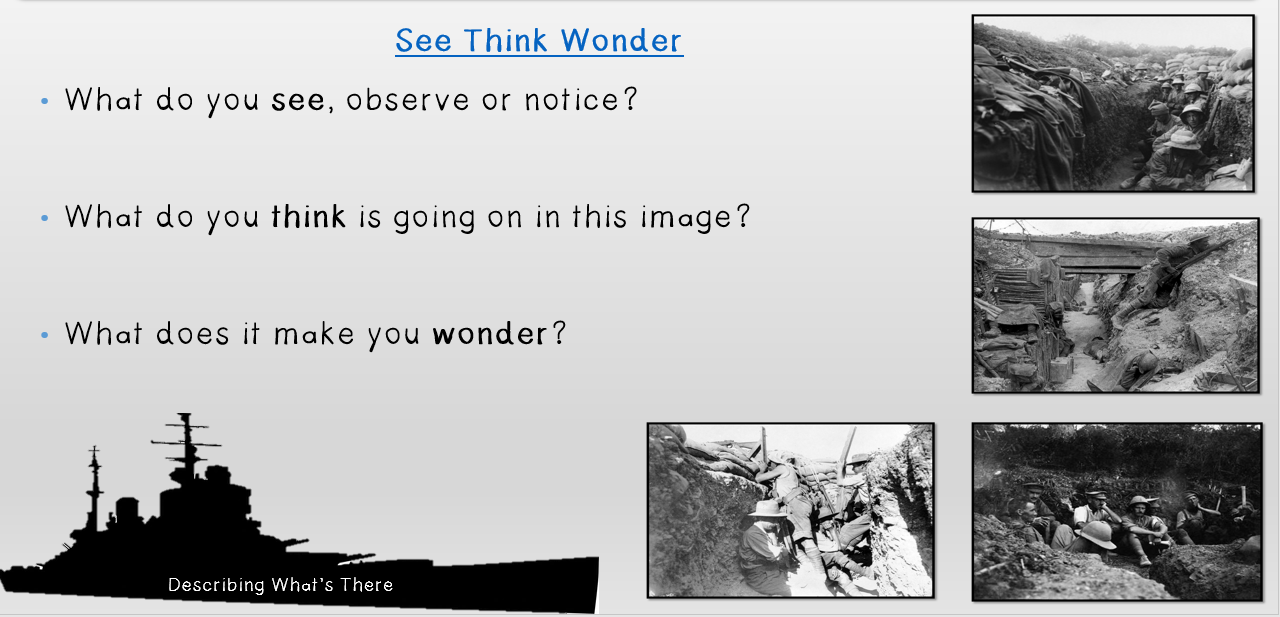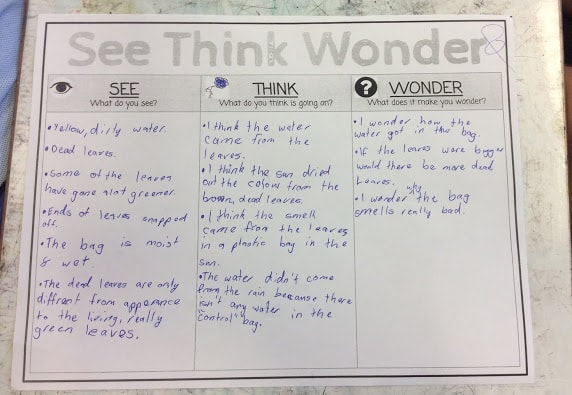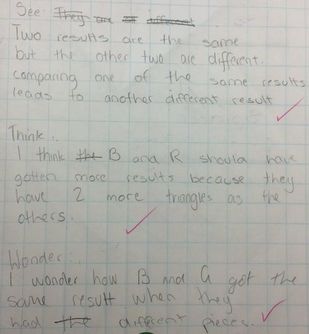|
The See Think Wonder routine encourages students to:
| |||||||||||||
|
Documenting Thinking
In this routine, students are generally sharing their thinking at each step along the way before moving on to the next one. This allows the class to build on the group's thinking and often results in richer discussions. It can be very useful to document the thinking at each stage, although this is not always necessary. If you are wanting to document thinking as your students engage with the routine See Think Wonder then this template may be useful. |
THE ROUTINE IN ACTION
|
|
The See Think Wonder thinking routine (Ritchhart et al, 2011) is one of the first routines I introduce to students to help them unpack their thinking and wonderings about different stimuli. It is a highly versatile routine that works really well with visual images, short clips, artifacts, patterns, small texts or picture books.
Read the blog post Using the See Think Wonder Routine to read about how I use and adapt this thinking routine in the classroom.
|
|
Adapting the Language
You can make adjustments to the language of the See Think Wonder routine based on the type of stimulus you are using and the end goal of using the routine with your students. I often add observing and noticing to the language of seeing. I also prompt my students to explore beyond thinking just about what they think is going on by asking them to think about the why. Asking for justification of thinking, requires students to show depth of understanding and provide reasons for their current thinking. This becomes a great assessment tool for examining what level of knowledge students have and highlights opportunities to identify where to take student understanding and thinking next. |
|
Here are some additonal examples of how this routine can be used across the curriculum:
|
Please note that these pages contain a collection of resources and links to activities to support and enhance classroom teaching and learning. The thumbnails and activities are the property of the authors/creators and available due to their generosity in sharing their work. All sources are acknowledged on the ACKNOWLEDGEMENT OF SOURCES page.
This website contains NSW syllabus content prepared by the NSW Education Standards Authority for and on behalf of the State of New South Wales which is protected by Crown copyright. https://www.educationstandards.nsw.edu.au/wps/portal/nesa/home
This work is licensed under a Creative Commons Attribution-NonCommercial-ShareAlike 4.0 International License.
This website contains NSW syllabus content prepared by the NSW Education Standards Authority for and on behalf of the State of New South Wales which is protected by Crown copyright. https://www.educationstandards.nsw.edu.au/wps/portal/nesa/home
This work is licensed under a Creative Commons Attribution-NonCommercial-ShareAlike 4.0 International License.
